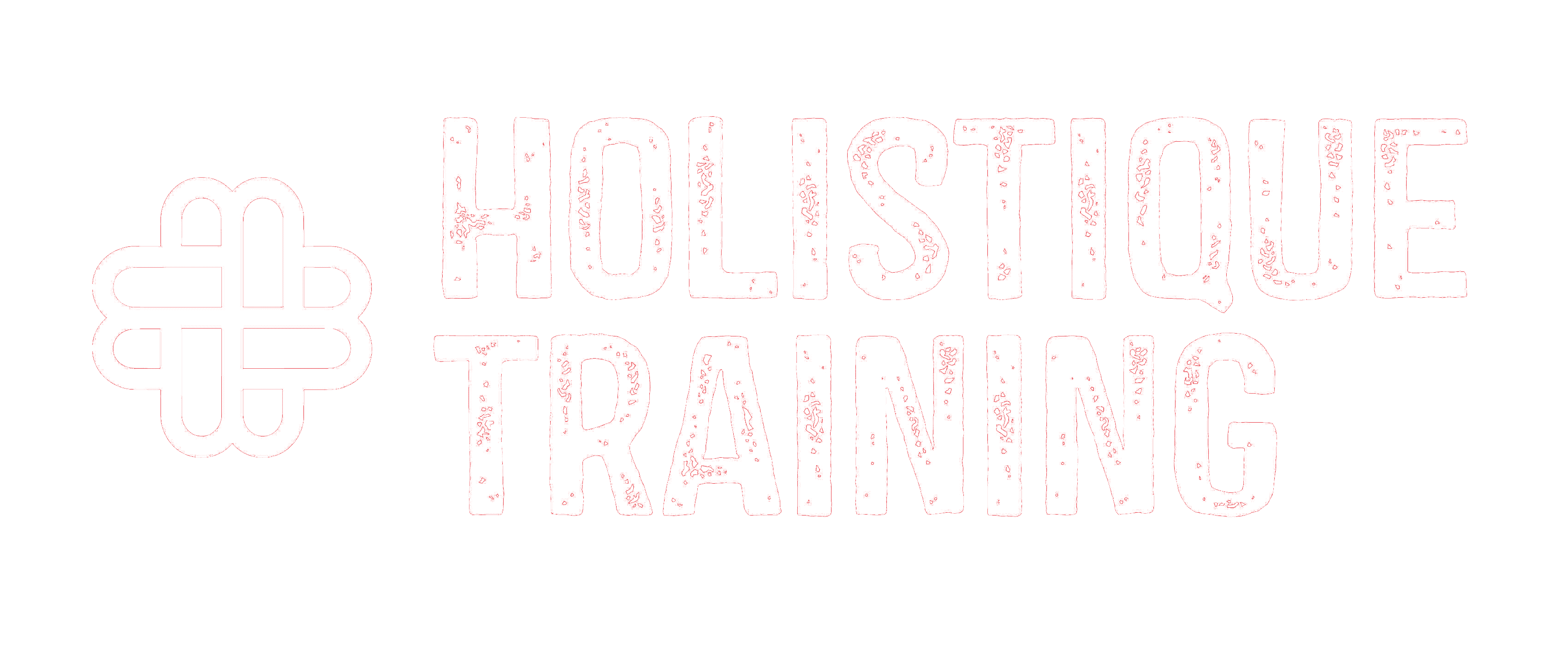- Table of Contents
- Introduction
- What Is a Target Audience?
- How Do You Find Your Target Audience on Social Media?
- a. Define Your Brand Identity
- b. Conduct Market Research
- c. Use Social Media Analytics
- d. Monitor Social Media Conversations
- e. Engage with Your Followers
- What Is Target Audience Analysis and Why Do You Need It?
- a. Refine Your Messaging
- b. Optimise Content Strategy
- c. Choose the Right Platforms
- d. Enhance Customer Experience
- e. Stay Ahead of the Competition
- Target Market vs. Target Audience
- Target Market
- Target Audience
- How to Tailor Your Marketing Plan According to Your Target Audience
- 1- Personalised Content
- 2- Choose the Right Platforms
- 3- Consistent Branding
- 4- Engage and Interact
- 5- Influencer Marketing
- 6- Monitor and Measure
- Conclusion
Introduction
In today's digital era, social media has become a powerful tool for businesses to reach their target audience and build a strong online presence. However, with the ever-increasing number of users and platforms, navigating the social media landscape effectively can be challenging. To succeed in this competitive environment, businesses must understand their target audience and tailor their marketing strategies accordingly. In this blog post, we will explore what a target audience is, how to identify them on social media, the importance of target audience analysis, the difference between target market and target audience, and finally, how to craft a successful marketing plan based on your target audience's preferences.
What Is a Target Audience?
A target audience refers to a specific group of people who are most likely to be interested in your products or services. These individuals share common characteristics, preferences, and behaviours that align with your brand's offerings. Identifying and understanding your target audience is the first step towards creating a successful social media marketing strategy.
When you define your target audience, you can create content and messages that resonate with them, increasing the chances of engagement, conversion, and brand loyalty. Knowing your audience allows you to speak directly to their needs, pain points, and desires, fostering a deeper connection and building a loyal customer base.
How Do You Find Your Target Audience on Social Media?
Finding your target audience on social media requires combining data analysis and understanding your brand's identity. Here are some strategies to help you identify and locate your ideal audience on various social media platforms:
a. Define Your Brand Identity
Before embarking on the journey to find your audience, it's crucial to clearly understand your brand's personality, values, and unique selling points. Your brand identity is a magnet, attracting the right audience that resonates with your offerings. Consider the following elements:
- Brand Personality: Define whether your brand is fun and playful, serious and professional, or somewhere in between. This will set the tone for your content and attract an audience that aligns with this personality.
- Values: Clearly articulate your brand's core values. Consumers are increasingly drawn to brands that share their values, and aligning with your audience in this way can create a powerful connection.
- Unique Selling Points (USPs): Identify and highlight what makes your products or services stand out. Understanding your USPs helps tailor messages that specifically address your audience's needs.
b. Conduct Market Research
Use online surveys, interviews, and social media analytics to gather valuable insights about your existing customers. This step involves going beyond the surface to truly understand the nuances of your audience's preferences and behaviours:
- Demographics: Collect data on age, gender, location, and other demographic factors. This information forms the foundation for targeted marketing efforts.
- Interests and Hobbies: Uncover what your audience is passionate about. This knowledge allows you to tailor content that aligns with their interests, increasing the likelihood of engagement.
- Online Behaviours: Analyse how your audience interacts with social media. Do they prefer short-form videos, lengthy articles, or visual content? Understanding their online behaviour helps shape your content strategy.
- Pain Points: Identify your audience's challenges and pain points. This information is invaluable when crafting messages that offer solutions and address their specific needs.
c. Use Social Media Analytics
Most social media platforms offer robust analytics tools that provide demographic information and insights about your current audience. These tools can significantly enhance your understanding of your audience and inform your social media strategy. Here are some effective analytics tools:
Tool | Features | Platforms Supported |
Social Sprout | Provides analytics, social listening, and scheduling features, offering a comprehensive overview of your social media performance | Multiple Platforms |
Google Analytics | Offers insights into your social media traffic and audience demographics | Web |
HubSpot | Assists in measuring social media performance and managing content | Multiple Platforms |
Table 1: The Analytics tools to measure SM performance
These tools empower businesses to track metrics such as engagement, reach, and follower demographics, providing a data-driven foundation for decision-making.
d. Monitor Social Media Conversations
Leveraging social listening is a proactive approach to understanding your audience. This involves actively monitoring various social media platforms to track mentions of your brand, your competitors' brands, and relevant keywords associated with your industry or niche, according to Hootsuite. Utilising social listening tools makes this process seamless and effective. Consider the following steps:
- Keyword Tracking: Identify and track keywords relevant to your industry. This will help you identify conversations where your brand can add value.
- Competitor Analysis: Monitor what people are saying about your competitors. This provides insights into market sentiment and helps differentiate your brand.
- Brand Mentions: Monitor mentions of your brand closely. Positive mentions can be leveraged for testimonials, while negative mentions provide an opportunity for proactive reputation management.
Social listening tools, such as Hootsuite and Brandwatch, enable businesses to stay attuned to the pulse of social media conversations, uncovering potential customers and their preferences.
e. Engage with Your Followers
Building relationships on social media goes beyond broadcasting messages; it involves active engagement. Responding to comments, messages, and mentions fosters a sense of community and encourages word-of-mouth marketing. Here's how businesses can effectively engage with their audience:
- Timely Responses: Respond promptly to comments and messages. This shows you value your audience's input and contribute to a positive user experience.
- Interactive Content: Create content that invites engagement, such as polls, quizzes, and interactive posts. This will boost engagement and provide valuable insights into your audience's preferences.
- User-Generated Content: Encourage your audience to create content related to your brand. This showcases genuine user experiences and builds a sense of community. Statistics show that by integrating user-generated content (UGC) into their campaigns, companies achieve an average cost savings of 15% on content creation. Furthermore, UGC content is 50% more cost-effective than traditional campaign approaches.
Engagement is a two-way street; businesses that actively participate in conversations and interact with their audience are likelier to build lasting connections and loyalty.
Incorporating these strategies into your social media approach transforms it from a one-size-fits-all to a tailored and nuanced strategy that resonates with your specific target audience. By combining these methods, businesses can enhance their understanding of their audience and create content that captures attention and fosters a sense of community and brand loyalty.
What Is Target Audience Analysis and Why Do You Need It?
Target audience analysis systematically studies and interprets data to understand your ideal customer's preferences, needs, and behaviours. This analysis is crucial for the success of your social media marketing efforts, as it enables you to:
a. Refine Your Messaging
Understanding your target audience enables you to go beyond generic communication and craft deeply resonating messages. This involves addressing their explicit needs and tapping into their emotions and aspirations. You create a more authentic and relatable brand voice by continually refining your messaging based on audience analysis.
b. Optimise Content Strategy
Audience analysis isn't solely about demographics; it extends to understanding the nuances of content consumption. Continuous analysis lets you decipher the type of content that captures attention and compels action. Whether your audience leans towards informative blogs, visually engaging infographics, or interactive videos, this optimisation ensures that your content strategy remains agile and aligned with evolving preferences.
c. Choose the Right Platforms
Platforms evolve, and so do audience preferences. Target audience analysis provides insights into which platforms your audience frequents the most. It goes beyond the general knowledge of platform popularity and hones in on where your specific audience is most active. This dynamic understanding helps allocate resources effectively, ensuring your presence is felt where it matters the most.
d. Enhance Customer Experience
Beyond merely selling products or services, understanding your audience's pain points allows you to be a solution provider. Through continuous audience analysis, you can proactively address emerging challenges, enhancing the overall customer experience. This customer-centric approach fosters satisfaction and cultivates loyalty, turning one-time buyers into long-term brand advocates.
e. Stay Ahead of the Competition
Audience preferences are dynamic, and the business landscape is ever-evolving. Regular and thorough target audience analysis positions your business at the forefront of these changes. By staying ahead of emerging trends and preferences, you meet your audience's current needs and anticipate their future expectations. This proactive stance gives you a competitive advantage, allowing you to adapt and evolve alongside, or even ahead of, the competition.
In essence, target audience analysis is not a static task but a continuous process that permeates every facet of your business strategy. It's a commitment to staying deeply connected with your audience, understanding their journey, and adapting your approach to ensure your brand remains relevant and indispensable in their lives. This ongoing commitment to analysis is the heartbeat of a thriving and resilient social media marketing strategy.
Target Market vs. Target Audience
While the terms "target market" and "target audience" are often used interchangeably, they have distinct meanings:
Target Market
Your target market is an expansive category comprising potential customers with common characteristics, needs, and purchasing power. It's the broader demographic umbrella encompassing everyone who might be interested in your products or services. For example, if your business specialises in fitness apparel, your target market could include a diverse group of fitness enthusiasts spanning various ages, backgrounds, and fitness levels.
Understanding your target market involves a macro-level analysis of overarching trends, industry dynamics, and broad consumer demographics. This helps define the scope of your business and sets the stage for more refined marketing strategies.
Target Audience
In contrast, your target audience represents a more specific segment within your target market. It's a refined group of individuals who are not just potential customers but are most likely to be receptive to your marketing messages and have a higher potential to convert into actual customers.
Continuing with the fitness apparel example, your target audience might be young adults aged 18 to 35 interested in fitness and seeking sustainable and stylish activewear. This focus allows for a more personalised approach to crafting marketing campaigns.
Understanding the distinction between target market and target audience is pivotal for businesses aiming to streamline and optimise their marketing efforts.
While the target market provides a panoramic view of the entire consumer landscape, the target audience narrows the focus, honing in on the individuals most likely to engage with and respond positively to your marketing initiatives.
For businesses, this differentiation translates into practical implications. When formulating marketing strategies for the broader target market, the emphasis is on casting a wide net to create general brand awareness. In contrast, when tailoring campaigns for the target audience, the goal is precision — crafting messages and content that resonate intimately with the identified segment.
By recognising and utilising this difference, businesses can maximise the impact of their marketing efforts. The target market sets the stage, and the target audience steals the spotlight, allowing for a more nuanced, personalised, and ultimately effective approach to engaging potential customers. The synergy between these two concepts forms the foundation of a well-rounded marketing strategy that strikes the delicate balance between breadth and depth.
How to Tailor Your Marketing Plan According to Your Target Audience
Once you have identified and analysed your target audience, it's time to craft a marketing plan that speaks directly to them. Here are some strategies to tailor your social media marketing plan for maximum impact:
1- Personalised Content
Crafting content that resonates with your target audience's interests, challenges, and aspirations is a cornerstone of effective marketing. It goes beyond generic messaging, diving into the specifics that make your audience feel seen and understood. This involves employing language, visuals, and storytelling techniques that align with your audience's preferences and values. The goal is to create a connection that transcends the transactional, fostering a sense of relatability and authenticity.
2- Choose the Right Platforms
Not all social media platforms are created equal, and neither is your audience's presence on them. Focus your efforts on platforms where your target audience is most active. For instance, if your audience is young professionals, platforms like LinkedIn and Instagram might be more effective than Facebook. Understanding the unique dynamics of each platform and aligning them with your audience's preferences ensures that your message reaches its intended recipients.
3- Consistent Branding
Maintaining a consistent brand image across all your social media channels is crucial. Consistency builds trust and recognition among your audience, reinforcing your brand identity. This includes elements such as your logo, colour palette, tone of voice, and overall visual aesthetics. A cohesive brand image fosters trust and contributes to a seamless and memorable user experience across various touchpoints.
4- Engage and Interact
Social media is inherently interactive, and fostering engagement goes beyond mere content dissemination. Engaging with your audience through comments, direct messages, and live Q&A sessions creates a sense of community. Encouraging feedback, responding promptly, and acknowledging user-generated content strengthens your brand-consumer relationship and contributes to positive word-of-mouth marketing. The more actively you participate in the social dialogue, your audience will likely feel a personal connection with your brand.
5- Influencer Marketing
Collaborating with influencers whose audience aligns with your target audience can significantly amplify your brand's reach and credibility. Influencers have already cultivated a dedicated following, and their endorsement can carry substantial weight. When selecting influencers, ensure their values align with your brand, and their audience demographics match your target audience. This strategic partnership can introduce your brand to a wider audience while benefiting from the trust established by the influencer. In fact, according to 60% of marketers, posts created by influencers consistently outshine those directly produced by brands.
6- Monitor and Measure
Continuous monitoring of the performance of your social media campaigns is vital for refining your strategies and optimising future efforts. Metrics such as engagement rates, click-through rates, and conversions provide valuable insights into the effectiveness of your campaigns. Use this data-driven approach to identify what works and what needs adjustment. The social media landscape is dynamic, and staying agile based on real-time feedback ensures that your marketing plan remains adaptive and responsive to changing trends and audience behaviours.
In essence, tailoring your marketing plan involves a combination of art and science. The art lies in the creativity and emotional intelligence required to connect with your audience personally. The science involves leveraging data and analytics to continually refine and optimise your strategies. By striking the right balance between these elements, businesses can create a marketing plan that captivates their audience and drives tangible results. This iterative process, informed by a deep understanding of your target audience, positions your brand for sustained success in the ever-evolving landscape of social media marketing.
Conclusion
Targeting your business's social media audience is fundamental to successful digital marketing. You can design a marketing plan that resonates with the right people by understanding a target audience, how to find them on social media, the significance of target audience analysis, and the distinction between target market and target audience. Remember to stay adaptable and responsive to changes in audience preferences and behaviour, as the social media landscape is dynamic. By employing these tips, you'll be well on your way to building a thriving online community and achieving your business goals through social media marketing. However, if you need more help deepening your knowledge and acquiring hands-on strategies, consider enrolling in our comprehensive course, ‘Social Media 101 for Businesses,’ where you'll gain expert insights and practical skills to maximise your social media marketing success.






















